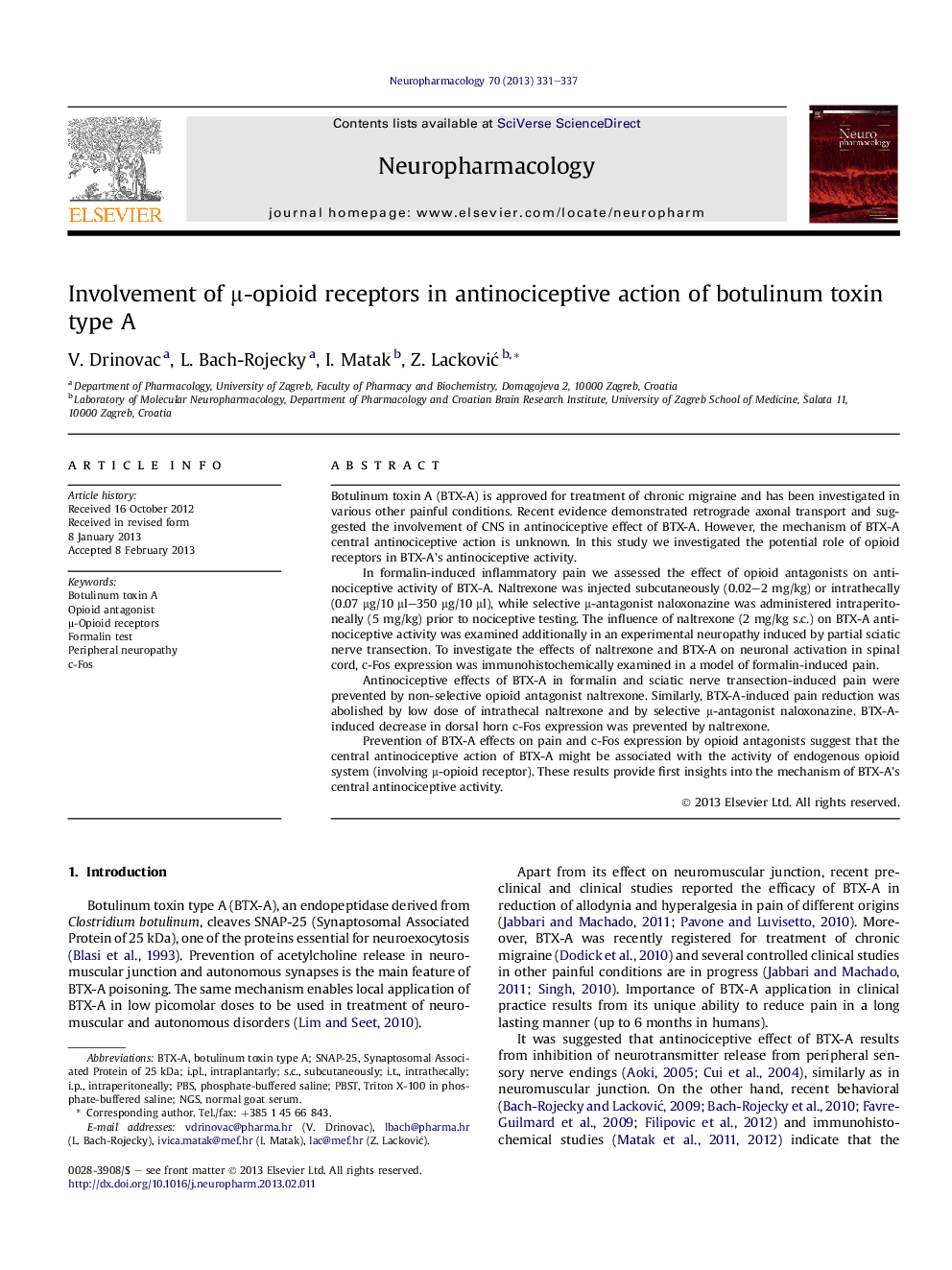| کد مقاله | کد نشریه | سال انتشار | مقاله انگلیسی | نسخه تمام متن |
|---|---|---|---|---|
| 5814789 | 1556643 | 2013 | 7 صفحه PDF | دانلود رایگان |

Botulinum toxin A (BTX-A) is approved for treatment of chronic migraine and has been investigated in various other painful conditions. Recent evidence demonstrated retrograde axonal transport and suggested the involvement of CNS in antinociceptive effect of BTX-A. However, the mechanism of BTX-A central antinociceptive action is unknown. In this study we investigated the potential role of opioid receptors in BTX-A's antinociceptive activity.In formalin-induced inflammatory pain we assessed the effect of opioid antagonists on antinociceptive activity of BTX-A. Naltrexone was injected subcutaneously (0.02-2 mg/kg) or intrathecally (0.07 μg/10 μl-350 μg/10 μl), while selective μ-antagonist naloxonazine was administered intraperitoneally (5 mg/kg) prior to nociceptive testing. The influence of naltrexone (2 mg/kg s.c.) on BTX-A antinociceptive activity was examined additionally in an experimental neuropathy induced by partial sciatic nerve transection. To investigate the effects of naltrexone and BTX-A on neuronal activation in spinal cord, c-Fos expression was immunohistochemically examined in a model of formalin-induced pain.Antinociceptive effects of BTX-A in formalin and sciatic nerve transection-induced pain were prevented by non-selective opioid antagonist naltrexone. Similarly, BTX-A-induced pain reduction was abolished by low dose of intrathecal naltrexone and by selective μ-antagonist naloxonazine. BTX-A-induced decrease in dorsal horn c-Fos expression was prevented by naltrexone.Prevention of BTX-A effects on pain and c-Fos expression by opioid antagonists suggest that the central antinociceptive action of BTX-A might be associated with the activity of endogenous opioid system (involving μ-opioid receptor). These results provide first insights into the mechanism of BTX-A's central antinociceptive activity.
⺠Opioid antagonists prevent the antinociceptive activity of peripheral BTX-A. ⺠This effect occurs on spinal cord level. ⺠BTX-A-induced pain reduction is mediated by μ-opioid receptor. ⺠The effect is present in different types of pain. ⺠Behavioral effect is accompanied by changes in dorsal horn c-Fos activation.
Journal: Neuropharmacology - Volume 70, July 2013, Pages 331-337